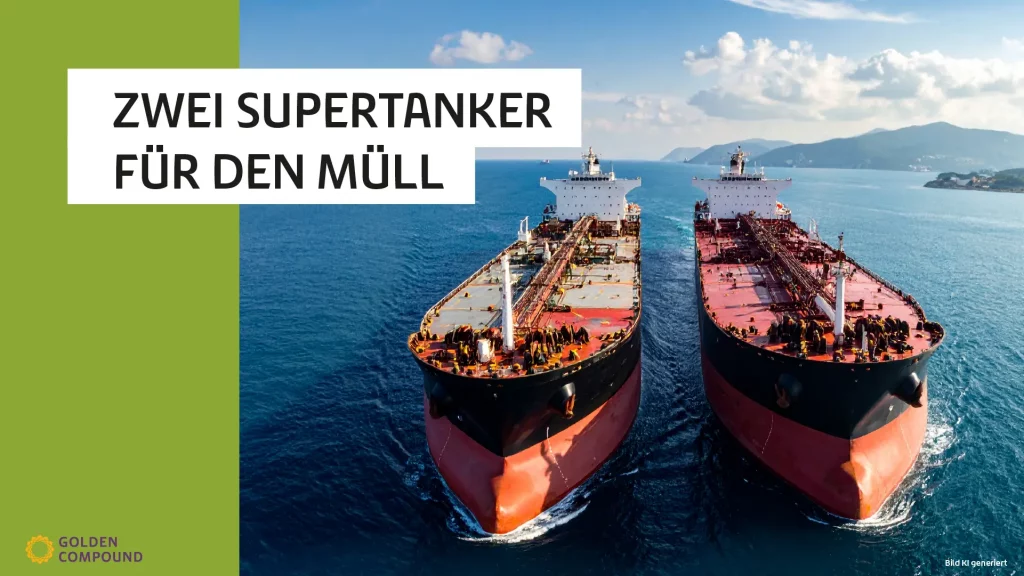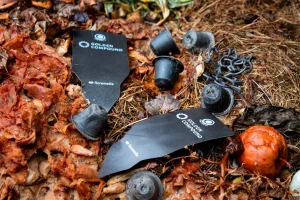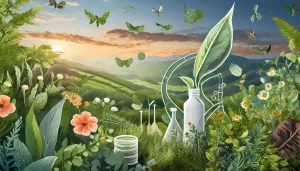Why We Focus on Biodegradable Plastics
From Vision to the Load of Two Supertankers (The 1 Million Tonne Problem)
Plastic is ubiquitous – and at the same time one of the biggest environmental problems of our time. Every year, millions of tonnes of plastic end up in soil, waterways and ultimately in the human food chain. Recycling and reuse are sensible and necessary in many areas, but they are far from being practicable everywhere. This is exactly where we come in: with the aim of developing biodegradable plastics from renewable raw materials that create real added value for the environment and society.

Pioneering Work Since 2016
We began developing biodegradable natural fibre materials back in 2016 – at a time when the market was still largely unprepared for the issue. Many of the discussions surrounding microplastics, compostability and alternative materials were still in their infancy. By getting involved early on, we were able to build up a huge advantage in terms of expertise, which is now evident in many innovative product solutions.
The first home-compostable coffee capsule
A milestone in this work was the market launch of the first home-compostable coffee capsule for Nespresso systems in 2018. While conventional capsules usually end up being incinerated or require complex disposal, we were able to develop a sustainable solution that decomposes without residue in home compost. This gave us the first home compostable certified coffee capsule on the market. This sent a clear message: biodegradable materials are not just a theoretical concept, but practical innovations with measurable benefits.
Confirmation by the BioSinn study: The load of two supertankers
In 2021, the nova-Institut published the BioSinn study on behalf of the Federal Ministry of Food and Agriculture. The aim was to find out for which products and applications biodegradation is the best end-of-life option. The result: 25 product groups were identified in which degradability offers real ecological advantages.
By way of comparison, 1 million tonnes is roughly the weight of two giant supertankers (Very Large Crude Carriers, VLCCs). This amount of plastic ends up in the environment every year because recycling or collection is logistically impossible.
Zum Vergleich: 1 Million Tonnen ist das ungefähre Gewicht von zwei gigantischen Supertankern (Very Large Crude Carrier, VLCC). Diese Menge Plastik landet jährlich in der Umwelt, weil Recycling oder Sammlung logistisch unmöglich ist.
These figures illustrate the scale of the problem, but also the enormous potential for sustainable alternatives. For us, this result was confirmation that working on biodegradable materials was and is the right way to reduce plastic pollution in the environment in the long term.
The 1 Million Tonne Problem
Why is this figure so crucial?
The problem is not caused by malicious intent, but by the type of use of the plastic. Many products inevitably end up in the environment, even when used correctly:
Agriculture: Mulch films or erosion control nets that remain in the soil.
Household: Stickers on fruit and vegetables, tea bags or chewing gum that end up in organic waste or on the street.
They are often too small, too heavily contaminated or present in too large quantities in the wrong cycle (such as the soil) to be recycled efficiently. In such cases, biodegradability is the only sensible solution to avoid microplastics.
The so-called 1 million tonne problem therefore describes not only the amount of potentially avoidable plastics, which is equivalent to the load of two supertankers, but also the opportunity to achieve real environmental relief through innovation and new materials.
Natural fibre materials as a solution
With materials such as GC green, we develop solutions that fit perfectly into this gap. Whether in agriculture (e.g. tree growth covers and browsing protection), in the household (e.g. tableware, lunch boxes) or in the consumer goods sector (e.g. coffee capsules) – the materials combine functionality with environmental compatibility. The use of natural fibres, biodegradable polymers and sustainable additives results in products that can be returned to the natural cycle after use.
This is not just about individual applications such as the home-compostable coffee capsule, but rather an entire portfolio of products that are gradually helping to solve the 1 million tonne problem.
From vision to responsibility
For almost a decade, we have been working on our vision of replacing plastic with biodegradable alternatives wherever recycling is not possible or practical. The BioSinn study has shown that this approach offers the greatest ecological benefits and can relieve the burden of two supertankers from our ecosystems.
Biodegradable plastics are not a panacea, but in many cases they are the best option for a clean environment and a sustainable future. We will continue to pursue this path consistently – with innovative strength, experience and the conviction that we bear responsibility for future generations.



